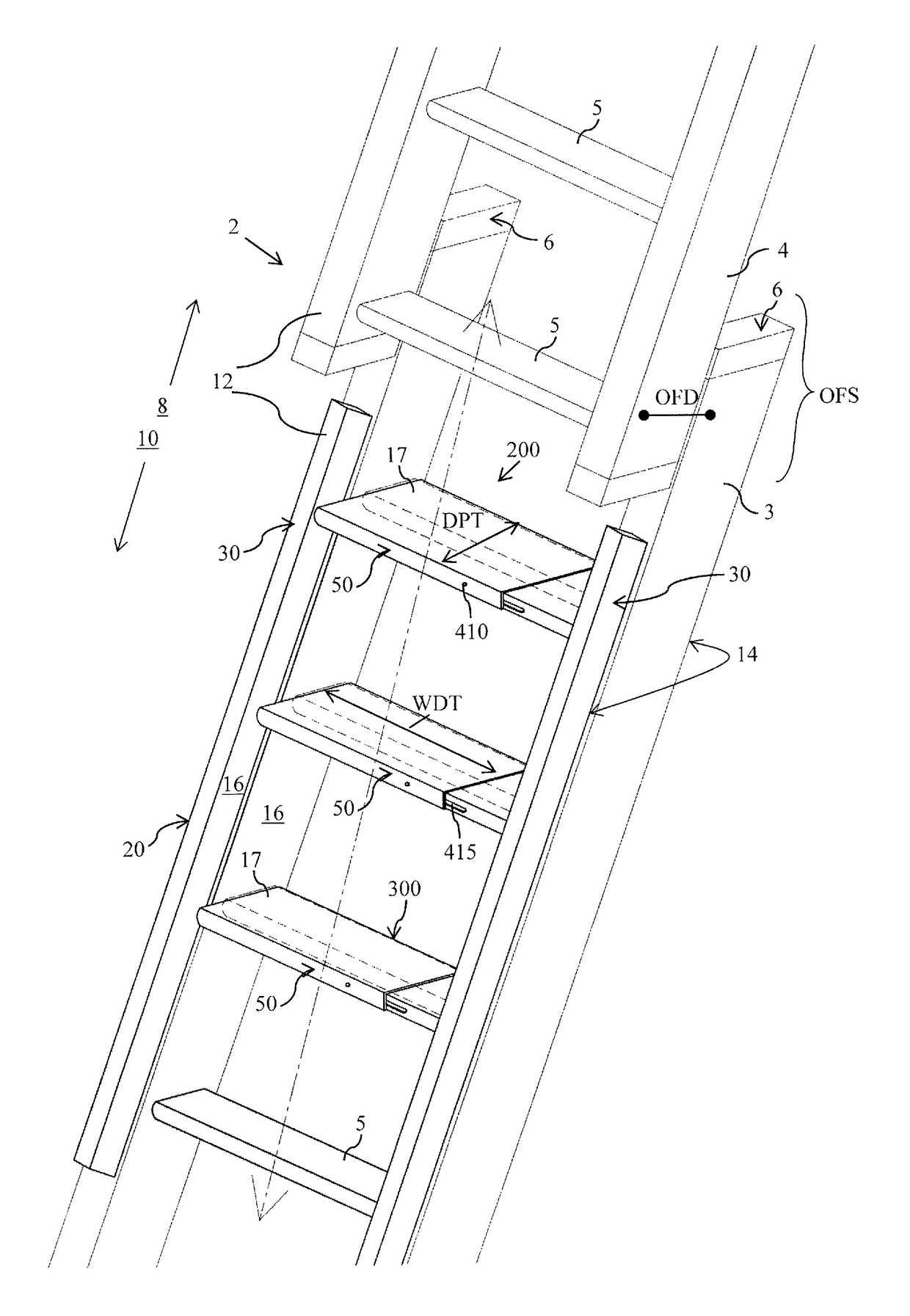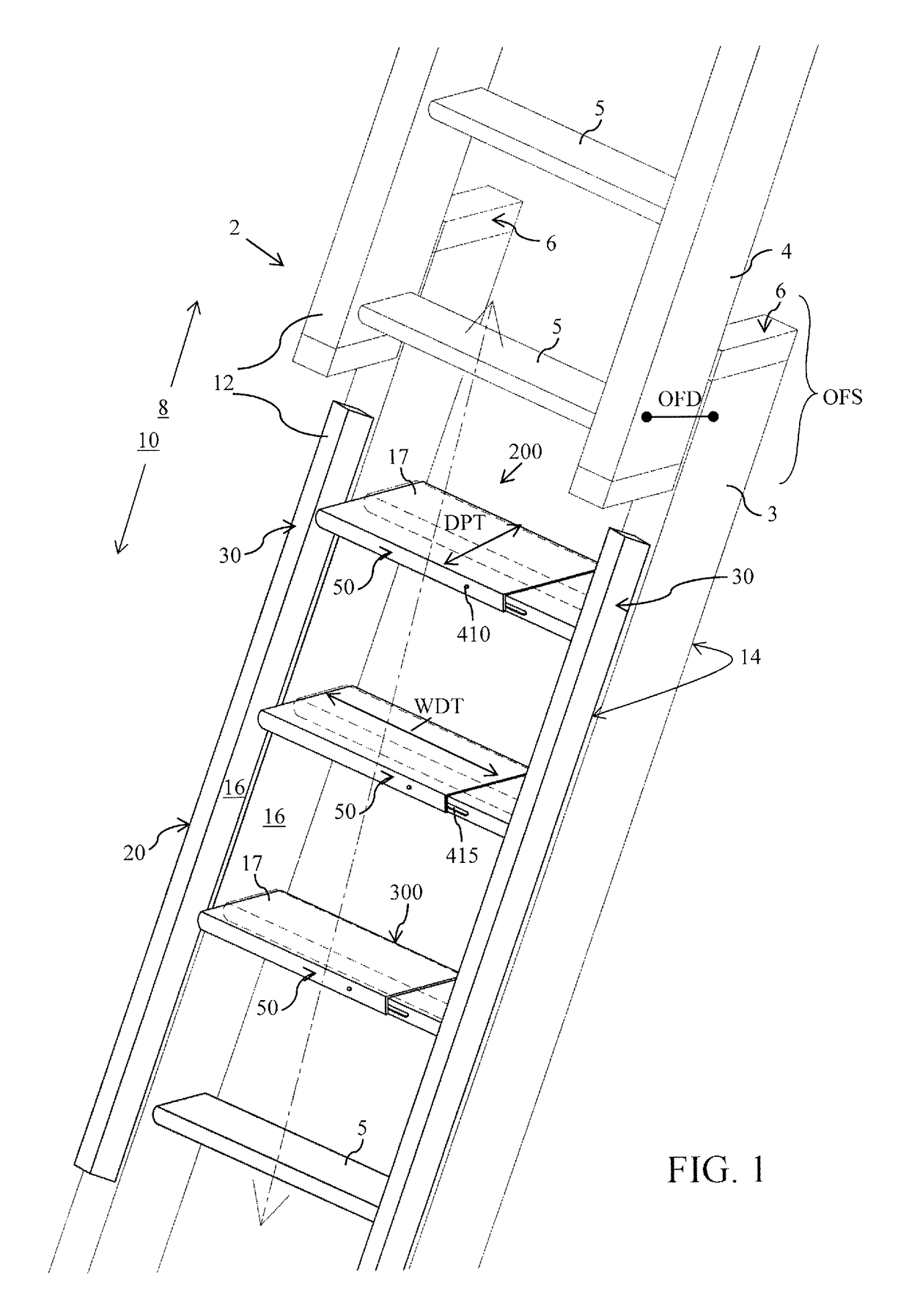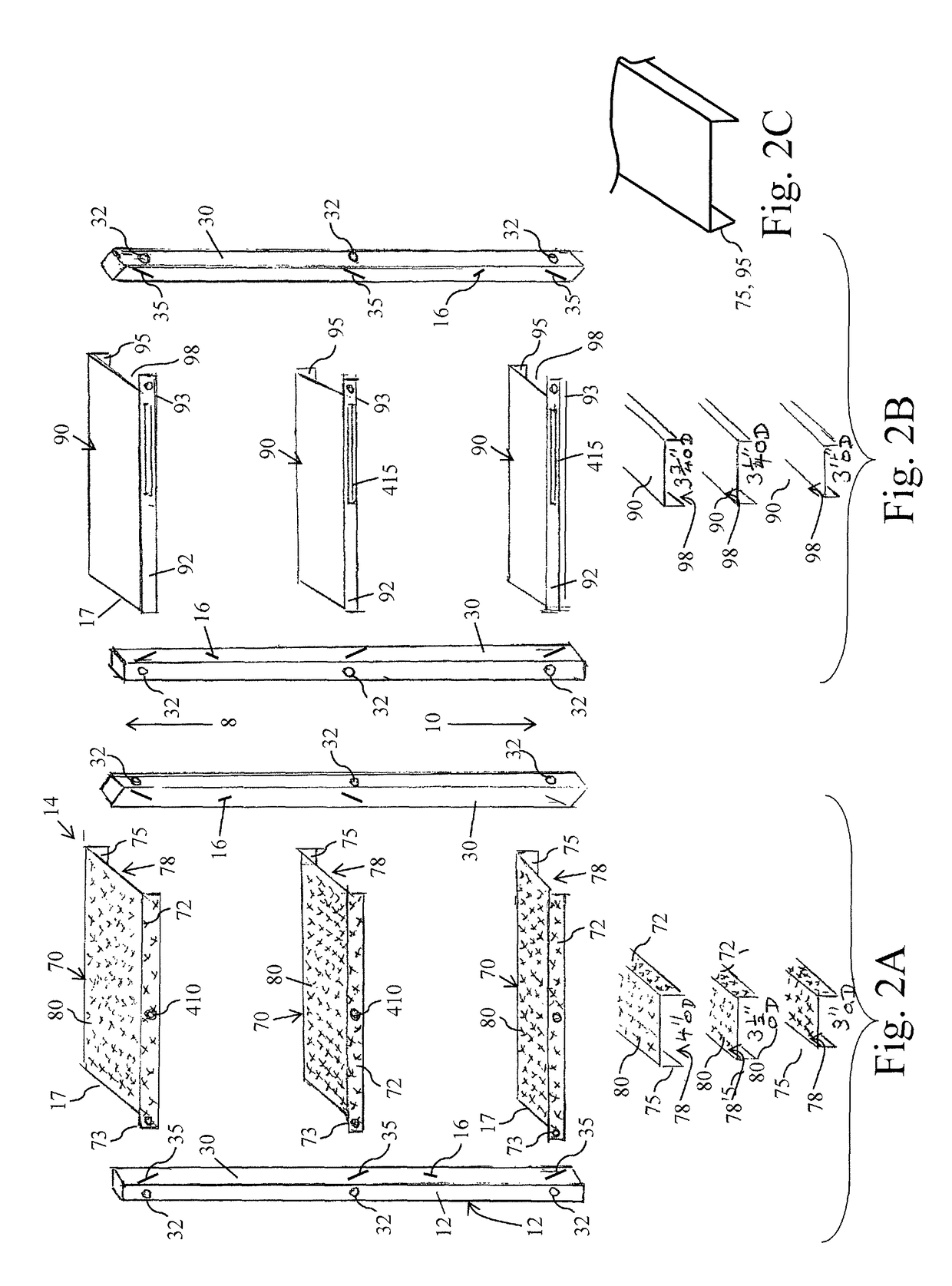Step adaptor for transitioning between sections of an extension ladder
a technology of step adaptor and extension ladder, which is applied in the field of step adaptor for, can solve the problems of increasing the likelihood of missing a step on a rung in the offset area, and difficulty in reaching the rung in the base section, so as to reduce the difficulty of traversing and facilitate the position of
- Summary
- Abstract
- Description
- Claims
- Application Information
AI Technical Summary
Benefits of technology
Problems solved by technology
Method used
Image
Examples
example 1
tor for Use on Extension Ladder
[0059]A common household use extension ladder has rungs that are approximately 15¾″ wide and side rails that are approximately 2¼″ wide, giving the extension ladder an overall width of about 18″. When the fly section is moved up on the base section, there is formed an offset distance, due to the depth of the side rails, between top rungs and lower rungs of about 2⅜.″ This offset distance is sufficient to make climbing and descending the ladder more difficult between the sections. Installing a step adaptor, having multiple, gradually narrowing steps, can reduce this offset distance to about ½ inch between each step, minimizing the effects of the offset distance.
[0060]A step adaptor, such as shown in FIG. 6, can have uprights of aluminum 1″×1″ square tubing, with a ⅛″ thickness to the walls. The uprights can be approximately 28″ in length and capped at both ends. The inside walls of the uprights, which face the steps, can have vertical slots that are app...
PUM
 Login to View More
Login to View More Abstract
Description
Claims
Application Information
 Login to View More
Login to View More - R&D
- Intellectual Property
- Life Sciences
- Materials
- Tech Scout
- Unparalleled Data Quality
- Higher Quality Content
- 60% Fewer Hallucinations
Browse by: Latest US Patents, China's latest patents, Technical Efficacy Thesaurus, Application Domain, Technology Topic, Popular Technical Reports.
© 2025 PatSnap. All rights reserved.Legal|Privacy policy|Modern Slavery Act Transparency Statement|Sitemap|About US| Contact US: help@patsnap.com



